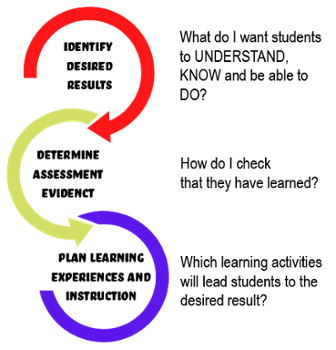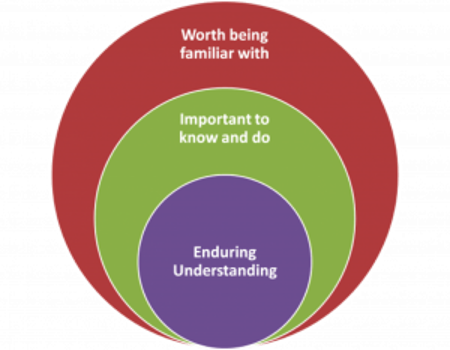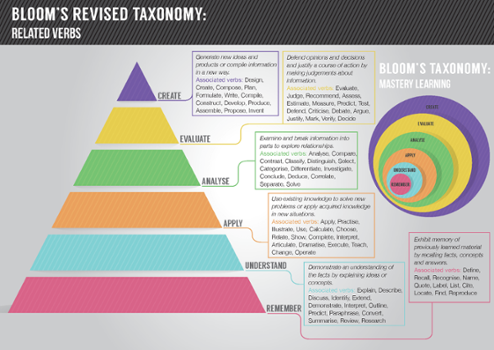Plan Your Course

The concept of backward design was originally introduced in 1949 by Ralph W. Tyler and in 1998 Wiggins and McTighe coined the term Backward Design. This concept entails beginning your curriculum planning with the outcome you wish to achieve, and designing your assessments and content based on those outcomes.
![]() Please visit each of the following steps for additional information.
Please visit each of the following steps for additional information.
STEP 1: IDENTIFY DESIRED RESULTS

To help you determine these overarching goals, Understanding by Design by Wiggins and McTighe encourages dividing your goals or outcomes into three categories:
- Enduring Understanding – To what extent does the big idea have enduring value beyond the classroom?
- Important to Know – To what extent does the big idea reside at the heart of the discipline?
- Worth being familiar with – To what extent do the students need other information that would help them?
Here is a worksheet that will help you identify your main goals and how they fit into the three categories –Backward Design Planning Worksheet.
STEP 2: DETERMINE ASSESSMENT EVIDENCE
Using your goals and outcomes, determine the best assessment to demonstrate that the student has accomplished this goal/outcome.
Wiggins and McTighe have created a Continuum of Assessment Methods.

This continuum begins with using the lower level of Bloom’s Revised Taxonomy with recall and moves to the upper levels with application, evaluation, and creation.

Keep this in mind as you create your assessments (be they in class or out).
The Backward Design Planning Worksheet can help you create your assessments by mapping them to your outcomes and to the levels of Bloom’s Taxonomy.
STEP 3: PLAN LEARNING EXPERIENCES AND INSTRUCTION
In this step, you will ask yourself, “What do the students need to practice or experience in order to complete the assessment and meet the outcomes?” This is how you can determine the types of activities or homework you want to create for the students.
Lastly, you will ask yourself, “What do the students need to be exposed to, read, watch, hear, etc. to gain the required information to complete the assessments and achieve the outcomes?” The answers to this question will guide you in selecting the readings, videos, lectures, etc. that the student needs. The “learning” materials.
The Backward Design Planning Worksheet can help you determine which activities will best suit your needs.






